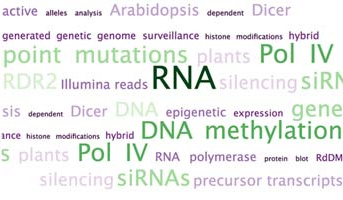Seminar Dr Todd Blevins
Functional assembly and regulation of the RNA polymerase IV machinery that silences TEs in plants - Tuesday, June 17th 2025 3:00 pm, INRAE, Versailles
Eukaryotes use RNA polymerase II (Pol II) to synthesize mRNAs from genes, allowing their translation into proteins for cellular functions. However, genomes also contain transposable elements (TEs) that can cause mutations when activated. Animals balance the need for gene transcription by Pol II against the risk of deleterious TE mobility by synthesizing small RNAs (piRNAs) that target and silence TEs. In plants, a specialized enzyme, RNA polymerase IV (Pol IV), transcribes TEs to produce small interfering RNAs (siRNAs) that guide DNA methylation to repress TEs. While the Pol IV complex is recruited to TEs via SNF2-like CLASSY (CLSY) proteins, how Pol IV partners with CLSYs remains mysterious. Here, we identified a conserved CYC-YPMF motif that is specific to Pol IV and positioned on the complex exterior. Furthermore, we found that this motif is essential for the co-purification of all four CLSYs with Pol IV, but that only one CLSY is present in any given Pol IV complex. These findings support a "one CLSY per Pol IV" model where the motif acts as a CLSY-docking site. Mutations in this site phenocopy pol iv null and clsy quadruple mutants. Together, these findings provide structural and functional insights into features that distinguish Pol IV from other RNA polymerases, allowing it to promote genome stability by targeting TEs for silencing.
Todd Blevins, Mechanisms of small RNA biogenesis and action, Institut de biologie moléculaire des plantes IBMP, Strasbourg
Invitation: Filipe Borges, contact, "Epigenetics, Reproduction and Transposable Elements" EPIREP team
In connection with the research developed at the Institute Jean-Pierre Bourgin for Plant Sciences.
Todd Blevins, Mechanisms of small RNA biogenesis and action, Institut de biologie moléculaire des plantes IBMP, Strasbourg
Invitation: Filipe Borges, contact, "Epigenetics, Reproduction and Transposable Elements" EPIREP team
In connection with the research developed at the Institute Jean-Pierre Bourgin for Plant Sciences.
Back
